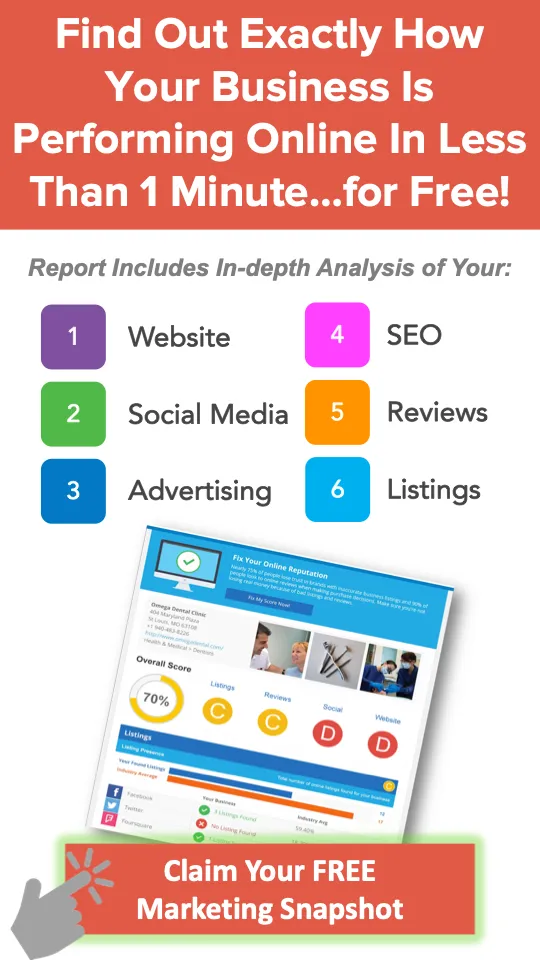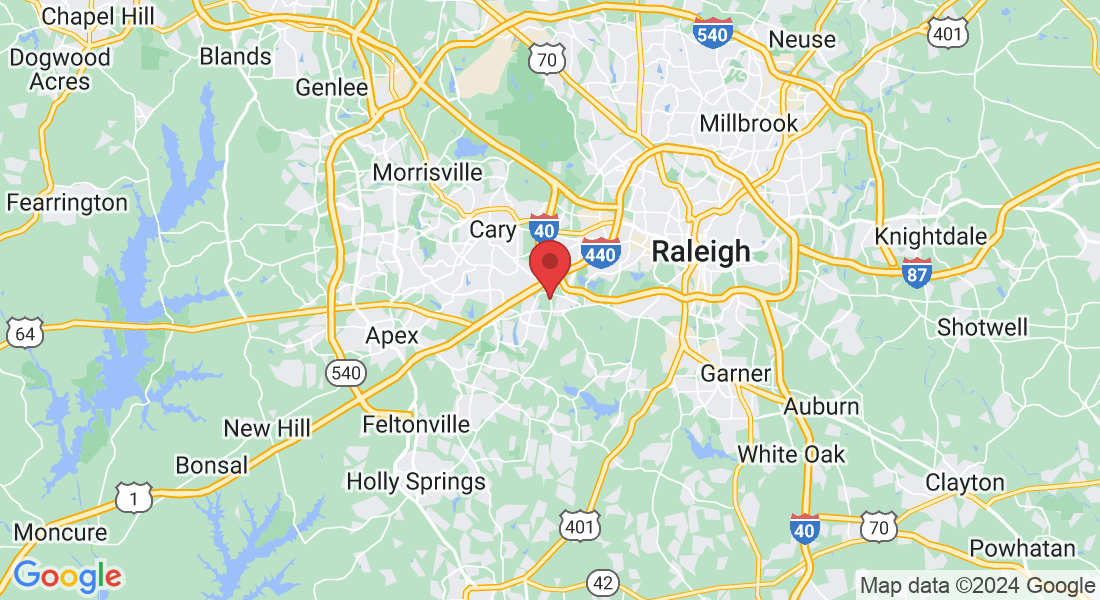
5 Hacks for Rapid Growth on a Limited Budget
Marketing your restaurant doesn’t have to break the bank. With the right strategies, you can maximize your reach, engage with your audience, and drive growth—even on a tight budget. The key? Start with digital marketing optimization and ensure all your digital tools work seamlessly together. Let’s dive into five actionable hacks that make restaurant marketing easy and effective.
Hack 1: Digital Marketing Optimization for Exponential Growth
In the digital age, your online presence is your restaurant's front door. Optimizing your digital marketing efforts is the first step to unlocking exponential growth, especially when all your tools and platforms are interconnected. Here’s how to get started:
1. Connect Your Digital Ecosystem
Google Business Profile Optimization: Ensure your Google profile is fully updated with accurate information, high-quality photos, and consistent responses to reviews. This boosts your visibility in local searches and establishes trust.
Online Listings: Maintain consistent profiles on platforms like Yelp, TripAdvisor, and OpenTable to capture diners searching for options.
Website Integration: Sync your website with tools like Google Analytics, Google Ads Pixel, and Facebook Pixel to track user behavior and conversions.
2. Utilize Advanced Tracking Tools
Google Tag Manager: Streamline your tracking by managing multiple tags (like Facebook and Google Pixels) from a single platform. This simplifies your setup and ensures accurate data collection.
Google Analytics: Understand your audience with insights on where they come from, what they look for, and how they interact with your website. Use this data to refine your strategy.
Facebook Pixel: Retarget website visitors on social media with tailored ads. Without it, you miss out on opportunities to re-engage interested customers.
Google Ads Pixel: Measure the effectiveness of your Google Ads campaigns by tracking clicks, conversions, and ROI.
3. Build Anonymous Customer Lists
Anonymous Website Visitor Identification: Use tools connected to your Google and Facebook accounts to gather insights about anonymous visitors. These tools help you identify trends and build retargeting audiences for highly targeted campaigns.
Email & SMS Campaigns: Sync collected data to create automated email or SMS sequences that re-engage website visitors or diners who haven’t returned in a while.
By optimizing and connecting your digital tools, you create a system that works 24/7, driving customer engagement, increasing visibility, and delivering measurable results.
Hack 2: Social Media Marketing
Social media platforms are an incredible (and affordable) tool for restaurant marketing. Here’s how to make the most of them:
Content Calendar: Plan your posts ahead of time to maintain consistency and align with promotions, events, and holidays.
User-Generated Content: Encourage customers to share photos of their meals using a branded hashtag. Reposting this content builds authenticity and community.
Targeted Ads: Invest in Facebook or Instagram ads to reach local audiences. Start small and refine your targeting based on engagement metrics.
Hack 3: Email Marketing for Customer Retention
Email marketing is an underrated powerhouse for driving repeat business. It’s affordable, measurable, and highly effective for customer retention.
Segmented Campaigns: Divide your audience into groups based on preferences, visit frequency, or previous purchases. Tailor offers for each segment (e.g., brunch specials for frequent Sunday diners).
Exclusive Offers: Reward your email subscribers with exclusive promotions or early access to events.
Automated Campaigns: Use tools like Mailchimp or Constant Contact to send welcome emails, birthday offers, and re-engagement messages automatically.
Hack 4: Online Reviews and Listings Optimization
Your online reputation plays a massive role in attracting new customers. A strong presence on review platforms ensures potential diners trust your business.
Google Reviews: Encourage happy customers to leave reviews and respond promptly to all feedback, whether positive or negative.
High-Quality Photos: Upload professional images of your dishes, dining area, and staff to online directories. Visual content is a key driver of decision-making.
Keyword-Optimized Listings: Use keywords like "best pizza in [city]" or "top brunch spot" in your business descriptions to boost your search rankings.
Hack 5: Special Events and Promotions
Creating excitement around your restaurant can boost traffic and customer loyalty.
Themed Nights: Host events like trivia, wine pairings, or live music to attract diverse crowds.
Happy Hour Specials: Test different time slots to identify peak demand and rotate drink or appetizer deals to keep things fresh.
Loyalty Programs: Digital loyalty programs incentivize repeat visits by offering points or discounts for each purchase. Apps like Toast or Square make implementation easy.
Making Restaurant Marketing Easy
Marketing your restaurant doesn’t have to be overwhelming or costly. By starting with digital marketing optimization and layering in proven strategies like social media, email marketing, and online review management, you can achieve rapid growth without overspending. Implement these hacks today to see your restaurant thrive—then let your connected tools and automation do the heavy lifting!
© 2025 All Rights Reserved
Restaurant Success System
Success Systems LLC
A unique business improvement process that helps Restaurant, Bar, and Brewery Owners double their profits and time off in as little as 90 days without struggling to find new customers, technology overwhelm, or working tirelessly day in and day out so they can achieve lasting financial freedom.
Contact Us
2474 Walnut St
Suite 309
Cary, NC 27518
919-646-3322
This site is not part of the Facebook website or Facebook Inc. Additionally, This site is NOT endorsed by Facebook in anyway. FACEBOOK is a trademark of Facebook, Inc.
DISCLAIMER: If you do nothing, you can expect nothing. Your results will vary and depend on many factors… including but not limited to your background, experience, and work ethic. All business entails risk as well as massive and consistent effort and action. If you’re not willing to accept that, please DO NOT APPLY FOR OUR PROGRAM.
This button has the CSS class "btn-popup" so we can use it to toggle the pop up. You'd normally hide this in a hidden section at the bottom of the page.
Add jQuery to your page. Normally I add this to the footer or a hidden section at the bottom of the page with the rest of my scripts.
Add your button/pop-up controller here - AFTER jQuery
You can also show a form that is hidden on the page
you will want to add custom CSS Class under advanced to the form element and then use custom CSS to hide the element from the page on landing
.YourCustomCSSName{
Display: none;}
This script lets you show different content in the pop-up based on which button you click. The URL of the button must be a matching CSS class in the pop up. For example: ".pop-01" would display the row with the CSS class "pop-01".
Also, each button has the CSS class "btn-pop" so we can attach our click events to them.
This button has the CSS class "btn-popup" so we can use it to toggle the pop up. You'd normally hide this in a hidden section at the bottom of the page.
Add jQuery to your page. Normally I add this to the footer or a hidden section at the bottom of the page with the rest of my scripts.
Add your button/pop-up controller here - AFTER jQuery













